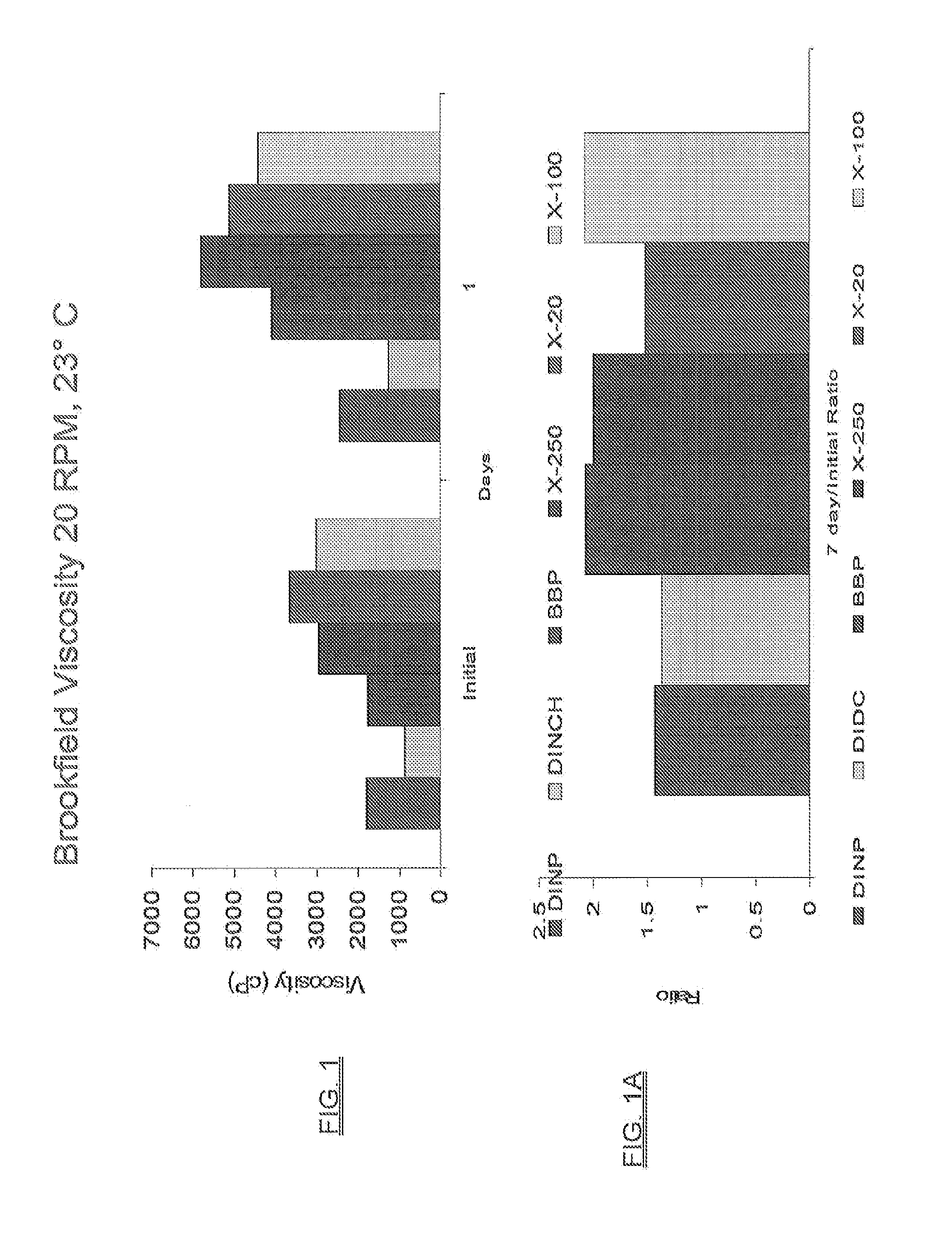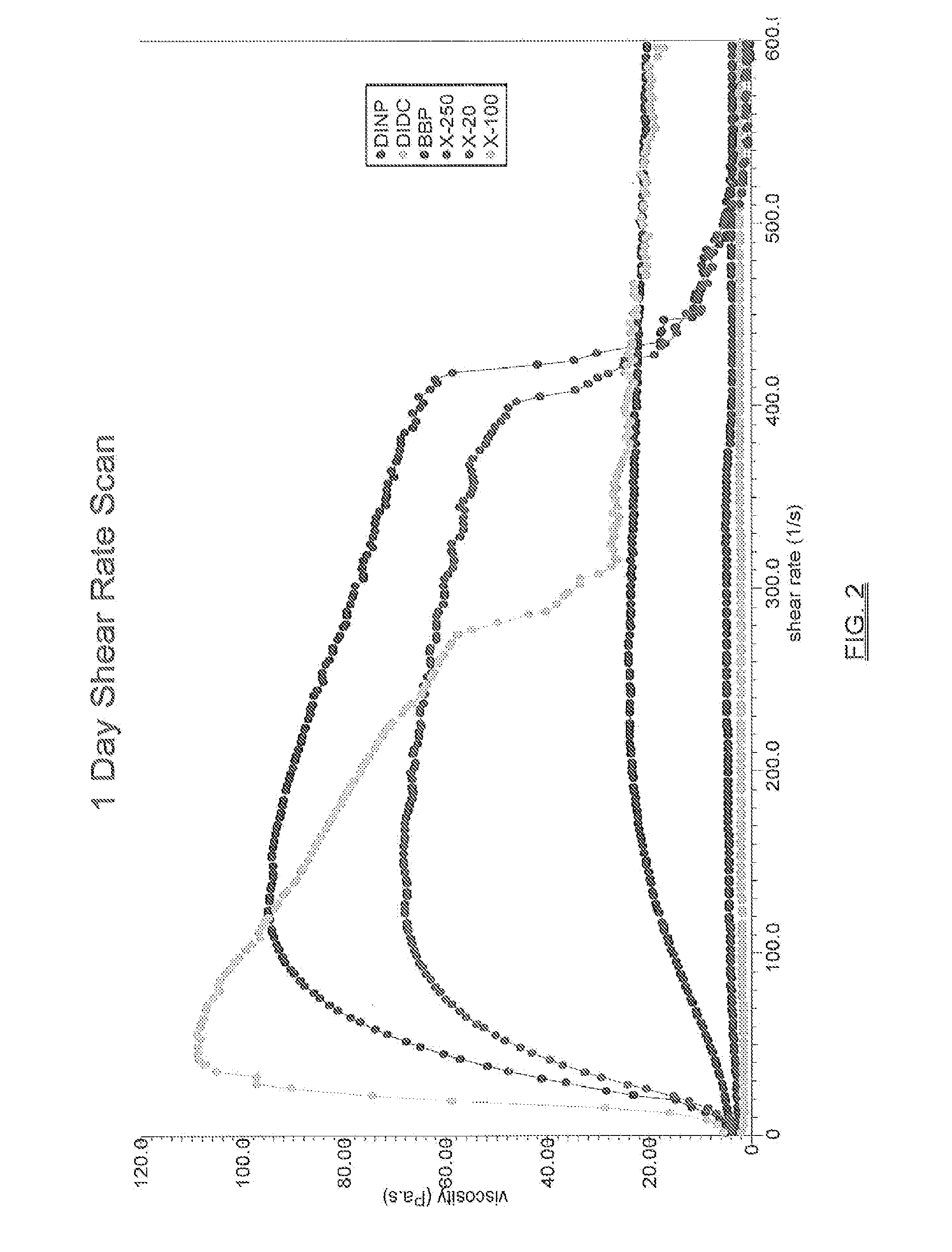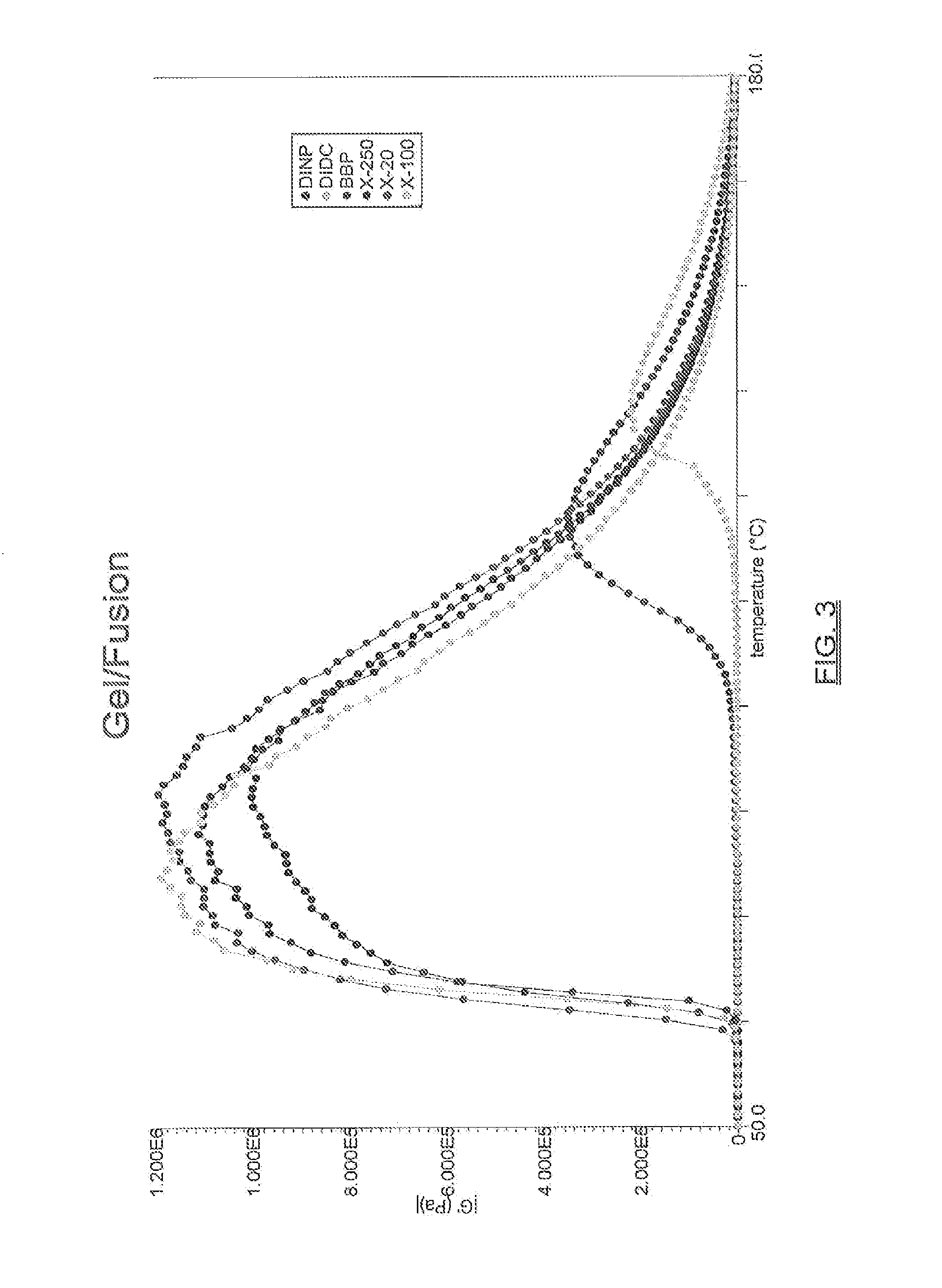Blends of dibenzoate plasticizers
a plasticizer and dibenzoate technology, applied in the direction of non-macromolecular adhesive additives, inks, coatings, etc., can solve the problems of increasing regulatory pressure, not always giving the performance desired in vinyl compositions, poor compatibility, etc., to reduce plasticizer freeze point, reduce processing time, and reduce the effect of tg suppression
- Summary
- Abstract
- Description
- Claims
- Application Information
AI Technical Summary
Benefits of technology
Problems solved by technology
Method used
Image
Examples
examples
Experimental Methodology
[0111]Plastisol and Vinyl Preparation
[0112]The plastisols made for the basic screen were prepared in a Hobart Model N-50 mixer. A ten minute mix at speed one (1) was used. A high speed disperser was also used to prepare other plastisols evaluated employing a ten minute mix at 1000 RPM's. All of the plastisols were degassed at 1 mmHg until as completely air free as possible.
[0113]The vinyl for the basic screen was fused in a closed mold at a thickness of 1.2 mm at 177° C. for 15 minutes in a Blue M oven. Vinyl for the stain testing was fused in a Mathis oven at a thickness of 0.5 mm at 204° C. for 2.5 minutes. The air flow was set at 1500 RPM's.
[0114]Tests / Evaluations
[0115]Unless otherwise indicated in specific examples, the general tests and / or methodologies described below were used in evaluating the performance of the inventive plasticizers in comparison to currently available plasticizers. The tests and methods are known to one skilled in the art.
[0116]Abi...
examples 1-6
[0125]For examples 1-6, the inventive triblend dibenzoate plasticizer (X20), comprising 20 wt. % 1,2-propylene glycol dibenzoate and 80 wt. % of an 80 / 20 DEG / DPG dibenzoate blend, was evaluated to determine basic performance parameters versus standard controls, to facilitate formulation directions. Controls used in examples 1-6 evaluations included butylbenzyl phthalate (BBP), diisononyl phthalate (DINP), and diisononyl-1,2-cyclohexane dicarboxylate (DIDC). Also separately evaluated, in addition to the inventive triblend, were a DEGDB / DPGDB diblend plasticizer (X250; 4:1 DEG dibenzoate:DPG dibenzoate ratio) and PGDB (X100>98%), both of which are components of the inventive triblend.
[0126]Tests conducted in examples 1-6 include: compatibility (loop and roll spew); efficiency (Shore A, tensile properties); permanence (extraction and volatility); and processability (viscosity, viscosity stability, shear rate / rheology and gel / fusion).
[0127]The basic plastisol formulation evaluated in ex...
example 1
Brookfield Viscosity
[0129]Brookfield Viscosity tests showed an expected higher initial viscosity for the high solvating plasticizer individual components, i.e., the DEGDB / DPGDB diblend (X250) and the PGDB (X100) showed higher viscosity over all controls initially and at day 1. The 7 day / initial ratio was also higher for the X250 and X100 individual components over the DINP and DIDC controls, but not for BBP. It was expected that the viscosity of the triblend (X20), i.e., the combination of the DEGDB / DPGDB and PGDB, would be additive, i.e., somewhere between (based on the blend ratios) the individual components' viscosities. Unexpectedly, the 7 day / initial viscosity ratio was lower for the inventive triblend than for BBP, or either the DEGDB / DPGDB (X250) and PGDB (X100) component alone and comparable to that obtained for DINP and DIDC. The lower the ratio, the more stable the plasticizer viscosity. Generally, high solvators are not expected to have a lower ratio, but the inventive tr...
PUM
| Property | Measurement | Unit |
|---|---|---|
| temperature | aaaaa | aaaaa |
| freezing point | aaaaa | aaaaa |
| thickness | aaaaa | aaaaa |
Abstract
Description
Claims
Application Information
 Login to View More
Login to View More - R&D
- Intellectual Property
- Life Sciences
- Materials
- Tech Scout
- Unparalleled Data Quality
- Higher Quality Content
- 60% Fewer Hallucinations
Browse by: Latest US Patents, China's latest patents, Technical Efficacy Thesaurus, Application Domain, Technology Topic, Popular Technical Reports.
© 2025 PatSnap. All rights reserved.Legal|Privacy policy|Modern Slavery Act Transparency Statement|Sitemap|About US| Contact US: help@patsnap.com



